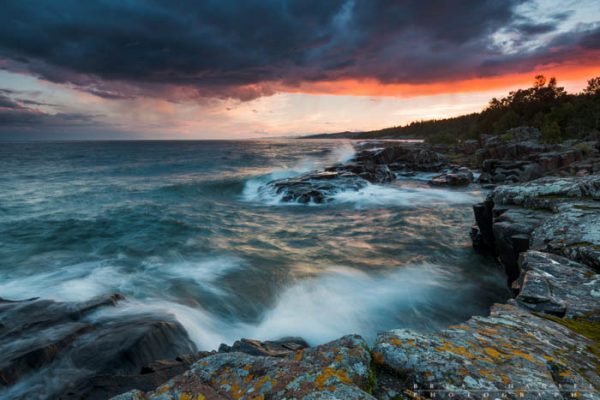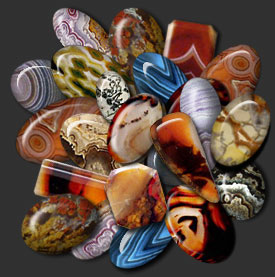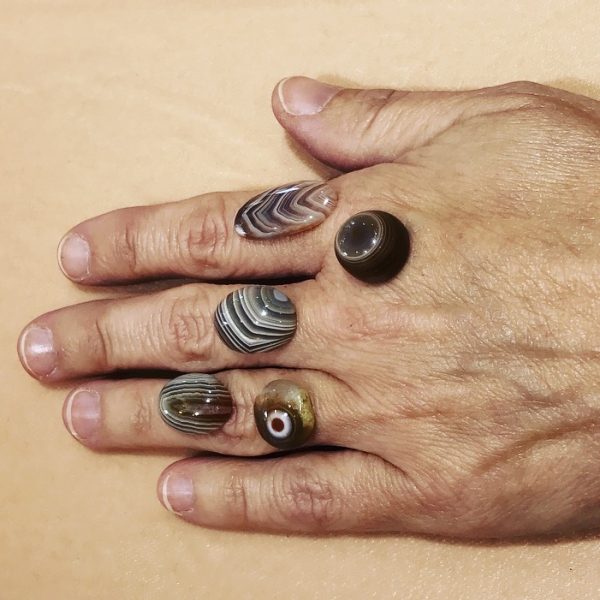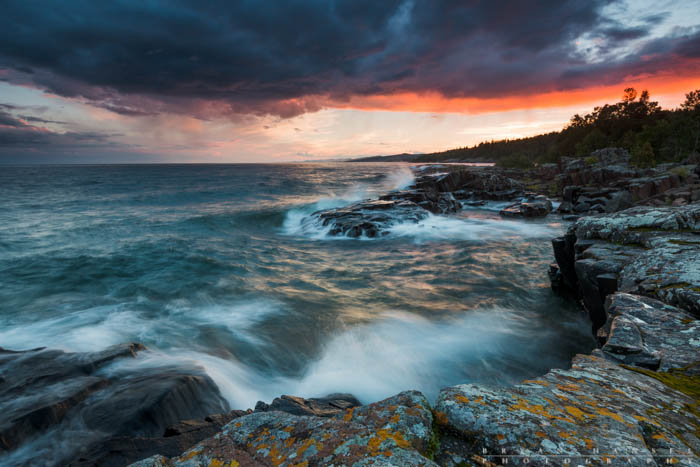Walking along the shores of Lake Superior, the views are spectacular. The last time I drove up north, I was blessed with the perfect array of weather patterns. The first day was so sunny that the lake sparkled endlessly. It was hard to tell whether you were looking at the sky or the lake. To me, it’s nothing short of magical when you can no longer distinguish water from sky from water.

photo by Bryan Hansel
On the second day, the sky melted into the lake in a hazy shade of grey, for the forecast correctly predicted a storm was brewing. The only possible way to venture out in a rainstorm on Lake Superior if you’re planning to walk next to it is to bundle up! Two to three light layers for the 50 degree temperature, another thick layer for the 17 mph winds, and a raincoat to keep you dry. Only once you are properly dressed, can you enjoy the elements from outside the comforting walls of your cabin. Bring a friend to have a hand to hold or for another set of eyes to witness the spectacular show.
When it rains, the precipitation reaches the ground, and soaks in to loosen the soil. The rest of the rain hits the lake and provides the force for high cresting waves and swirls up the sand into a rain dance. Once the water settles and the sand stops spinning, treasures bubble up to the surface of the rocky shores. From sea glass to lost flipflops, Lake Superior swallows up all kinds of forgotten items. For after all, Lake Superior is after all the largest body of fresh water on the planet.

Within the 2726 mile-long circumference of the lake, there are many beaches. Rocky and unstable terrain are characteristics that fit most of North Minnesota’s Superior shores. Not what you imagined thinking of the perfect beach vacation? You aren’t alone. Usually the silky sand that runs through your toes and clear blue water cresting with gentle waves sounds more appealing, but there’s more than what meets the eye at a select few of these non-traditional rocky beaches.

Hidden under and in between millions of ordinary rocks among the sea glass and other discarded belongings that are uncovered after a storm, if you’re lucky, you’ll be able to spot another kind of rock that isn’t like the others at all. Defined by slight translucency when wet, banded stripes, and a frequently golden, rust red, or forest green color, chances are you’re admiring an agate! Agates are little treasures originating deep within the Earth’s molten layer. They form their multi-colored layers and crystal-like looks in a way similar to Swiss cheese! If you’d like to know more about the science behind agates, check out this article from Pennsylvania State University.
http://news.psu.edu/story/140648/2001/09/01/research/how-do-agates-form
While part of me loves science, another part is more artistic. I admit that when it comes to gemstones like agates, I’m equally fascinated by the way they form and what they look like in the end of their transformation. Since agates form individually, no agate turns out quite like the other. During my trip up north this spring, I discovered a small piece of a waxy green agate with some crystallization emerging from one end. Unfortunately, it was so small that it fell out of my pocket on the way back to Minneapolis. Luckily, that little fragment isn’t the only agate available in the Twin Cities. At New Gild Jewelers, located in the Linden Hills neighborhood of Minneapolis, MN, co-owners Jen Bellefleur and Kelsey Lee-Karol have a collection of gemstones ranging from rare natural colored diamonds to Minnesotan agates! Kelsey even has a few hand picked and polished agates in his own personal collection to share. Some clients even bring their own agates to seed a beautiful piece of bespoke custom jewelry. Whether your style includes local gleaming agates, or another precious gemstone, our team of jewelers is equipped to create a piece of custom jewelry for you to carry geological history with you all day, everyday.
Learn more about the type of custom jewelry we can create for you by visiting or contacting our jewelry studio!



